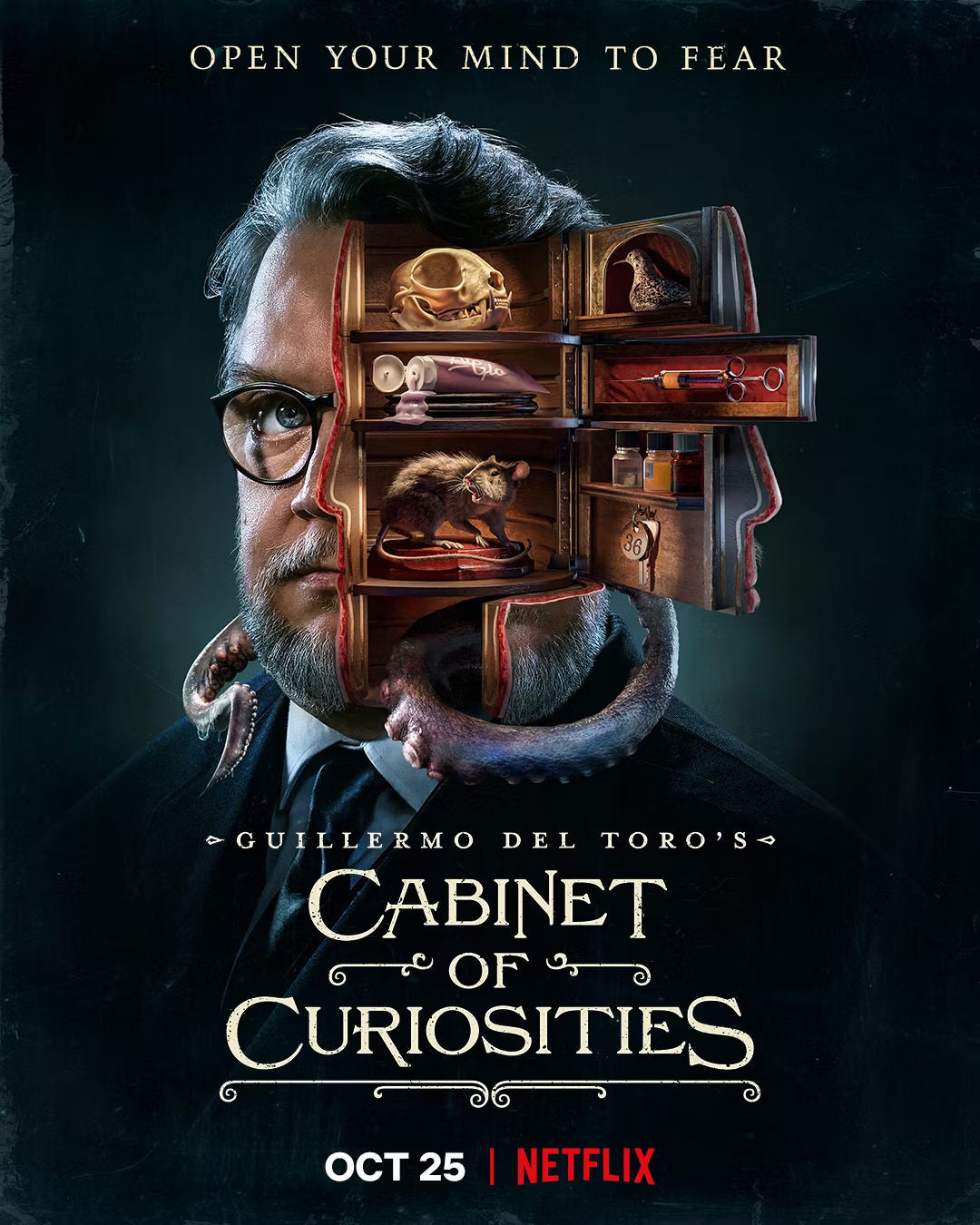
Before I get into the nitty gritty of the show, do you know what a cabinet of curiosities is? I don’t think I had ever come across the term until I read it here, in Daniel Davison’s post.
He actually visited the Chamber of Art and Curiosities in Austria at Ambras Castle while traveling. That particular collection holds the portrait of Dracula, and Daniel wanted to photograph it. I looked through the other pictures from that post. Portraits of people with disabilities. A sculpture of Christ on the cross carved out of red coral.
The strangeness of those objects did something to me. Inspiration almost captures the feeling I had while reading through his post, but it doesn’t quite do it justice. It feels like a disturbance in a still pond, light as butterfly’s wings, easily dismissed if I’m stressed or too busy. It’s a shadow in my peripheral that makes me wonder, breaks me out of the normal boring aspects of everyday life.
I seek that feeling out. I’m trying to capture it, to offer that to you here, on Kindling. The reminder that the world is not all Starbucks and Amazon. It is filled to the brim with forests and caves and history and dark places. Ancient ruins. Beauty and madness. A place of wonder.
That is what a cabinet of curiosities was meant to invoke: wonder at the unique objects picked up by curators who were wealthy enough to travel. It was a show of the exotic and strange. Collections might include anything, from horns and feathers of foreign animals to paintings and sculptures.
The collections provided entertainment while showing how cultured and high ranking an individual was socially. There was a mixture of objects that invoked scientific interest and study, and mythical and religious symbology. Philosophers would visit a cabinet to invoke feelings of fascination as they pondered the objects there. With the Enlightenment, these cabinets fell out of favor.
By the early decades of the eighteenth century, curiosities and wondrous specimens began to lose their influence among European natural philosophers. As Enlightenment thinkers placed growing emphasis on patterns and systems within nature, anomalies and rarities came to be regarded as potentially misleading objects of study. Curiosities, previously interpreted as divine messages and expressions of nature's variety, were increasingly seen as vulgar exceptions to nature's overall uniformity.1
To all that we owe the Enlightenment, this way of thinking is one of the things I dislike most about it. The exceptions are what I love most about life. Of course there are patterns in nature. Any minor study of math reveals that deep truth. But there are also breaks in the monotony of normality, ones that can not just be brushed aside.
And with that rant over, the show must go on.
I saw this pop up on Netflix over a month ago and made a mental note of it. I didn’t get a chance to watch it until this past week, and let me tell you, it was a treat. There are eight episodes, two written and directed by Del Toro2 himself, and the others curated by him from other storytellers.
The show is a horror anthology, a collection of the macabre and terrifying. The practical effects and cinematography are amazing, and each story is wildly different from the others. If you enjoyed Tales from the Crypt then this will be a home run.
There are layers to horror, and any and all are fair game in my book. That being said, I understand that not everyone is a fan of blood squirting out of eye sockets or rats crawling out of corpses. If you’re queasy, this show may not be for you. For some sick reason, I get a kick out of it. The practical effects are great and some of the stories are thoroughly disgusting.
Do you know what I mean by my above statement? Here. I’ll let the master of horror explain it himself.
“The 3 types of terror: The Gross-out: the sight of a severed head tumbling down a flight of stairs, it's when the lights go out and something green and slimy splatters against your arm. The Horror: the unnatural, spiders the size of bears, the dead waking up and walking around, it's when the lights go out and something with claws grabs you by the arm. And the last and worse one: Terror, when you come home and notice everything you own had been taken away and replaced by an exact substitute. It's when the lights go out and you feel something behind you, you hear it, you feel its breath against your ear, but when you turn around, there's nothing there...”
— Stephen King
If you find yourself bored with the usual and you’re willing to give it a chance, you may find something you like in this collection. At the very least, the cinematography and visual effects are incredible. And if you find that it’s too gory, I’m sorry. Consider this your public service announcement.






Very cool about the cabinets of curiosities. I've informally collected versions of these myself. I have an affinity for odd and rare objects, even if it's just a freaky rock or something, and keep them on shelves in my library. And I love King's taxonomy of horror. I'm definitely in the "terror" camp, but the show sounds interesting!
I love Guillermo and horror stories. I need to watch!! Thanks for this.